Brook trout are easy to love. They’re beautiful, live in cool places, and in certain situations will smash your fly like it’s the first meal they’ve seen in months. They became my favorite fish to target on the fly when I first moved to Vermont, and over the next several years I greatly enjoyed fishing for them in all sorts of different places across New England. As my interest in native fish grew I began challenging myself a little more- not by catching certain sizes or numbers of fish, but by looking into questionable places in their native range that brook trout might still exist. By some unforeseen circumstances in the spring of 2020 I found myself back in my home state of New Jersey for a few weeks, and decided to try what I had yet to do- find a population of native brookies in the Garden State.
Part of the reason I had yet to see a brook trout in New Jersey was my fault- I had never tried to seek them out, and had grown too comfortable hitting the same rainbow and brown trout streams I had always fished when I was home. The other reason is that brookies in the state have been extirpated from a pretty big chunk of their native range. Despite being the official state fish, centuries of habitat degradation and stocking wiped native brook trout from everything but the cleanest, coldest headwater streams. Unless you were lucky enough to stumble upon one of the relatively few streams with exceptional water quality to have brook trout, you’d have to seek them out. Doing so would require going a bit out of the way, higher above any of the more popular Garden State trout fisheries.
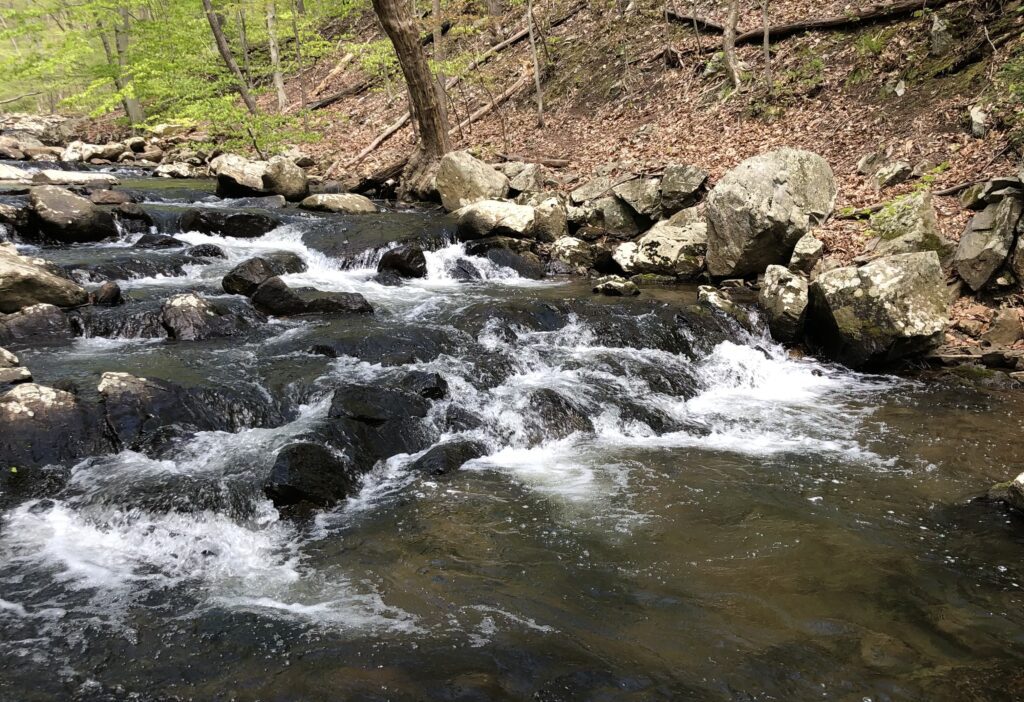
My goal of catching an NJ brookie wasn’t exactly groundbreaking. Although their presence in the state has been greatly diminished, they can still be found naturally reproducing in a good amount of streams here. Personally, I wanted to find the fish somewhat close to my own home in the heavier populated northeastern area of the state. I felt it would mean more to me knowing that the fish were still able to persist in such an unfavorable area for the native char.
To start, I researched papers and electrofishing surveys carried out by the state. At their most vague, these reports gave me general areas and watersheds that supported wild trout. Occasionally, they would reveal where researchers had found a few brookies, and places to start my search. I pinned out streams of interest, their tributaries, and public access points on Google Maps. Then, the fun part- thoroughly exploring my top contenders in the hopes that at least one of them would hold what I was looking for.
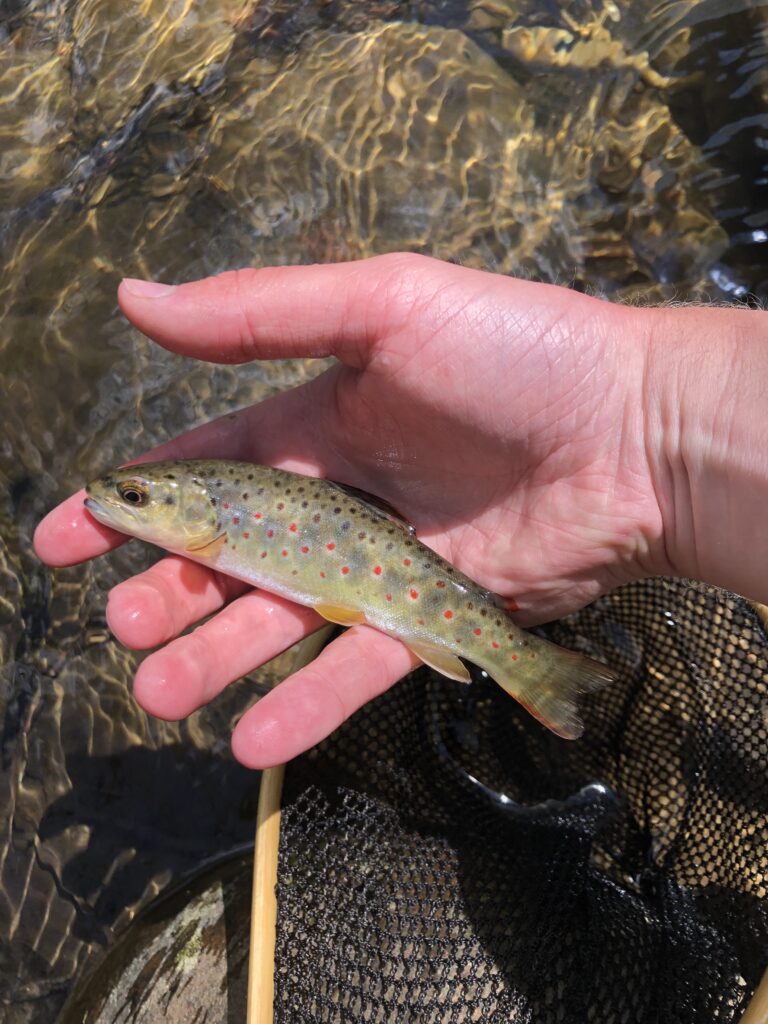

Over the next few weeks I hit a number of streams, casting my net further and further from my home. I fished through neighborhood ditches, the backyards of people’s mansions, and steep forested cascades, anything that had credible reports of native brook trout in relatively recent years. Knowing the waters I had grown up around, I fished most of these streams with low expectations. To my surprise, these expectations were exceeded in a great deal of the waters that I scouted. I found plenty of wild trout in all sorts of weird places, sometimes in very high numbers. Most of the waters I explored were virtually unpressured, and a short dry dropper rig was all that was needed to find what was inhabiting these new creeks. Though fun, they weren’t the fish I was after. The first couple weeks of effort only yielded wild rainbows and browns, with the occasional stocked rainbow that had found its way up from wherever it had been planted.
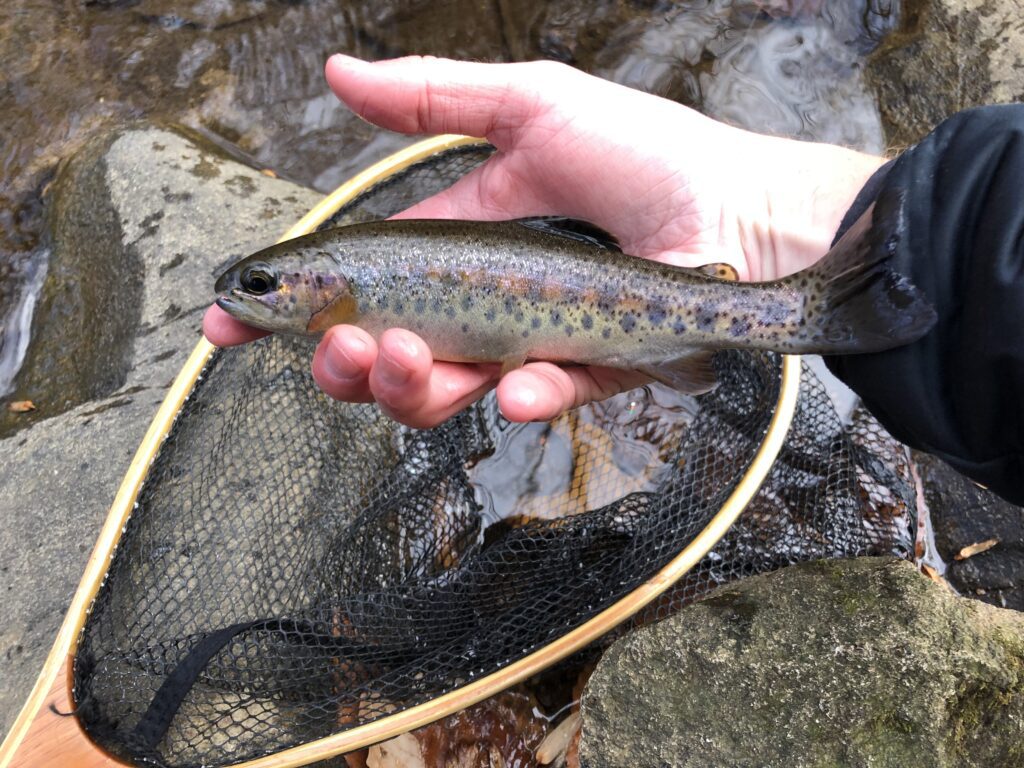

My time in New Jersey was running out, but I continued to work through the last few unexplored streams in my general vicinity. Finally, in one particularly brush-choked creek, I flipped a familiar fish into my net. It was ridiculously tiny, even as far as the small stream fish I’d been catching went, but there was no mistaking what it was- my first NJ brookie. I was shocked that I had even managed to hook it, let alone finally accomplish my goal.
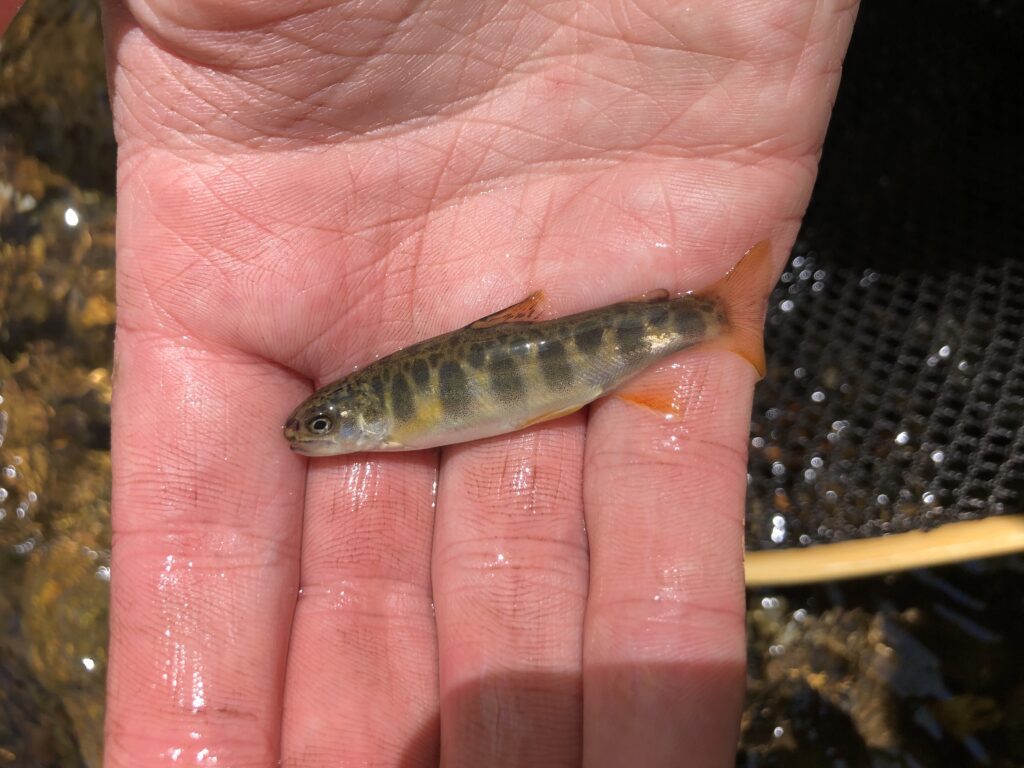

I began to explore other streams in the same drainage, and soon found a few other healthy brook trout populations. Besides the excitement of finally tracking these fish down, I had a lot of fun fishing the water types that I found them in. These streams were higher gradient than many of the other places I’d fished that month, and tumbled through boulder fields that formed tons of little plunge pools with eager fish.
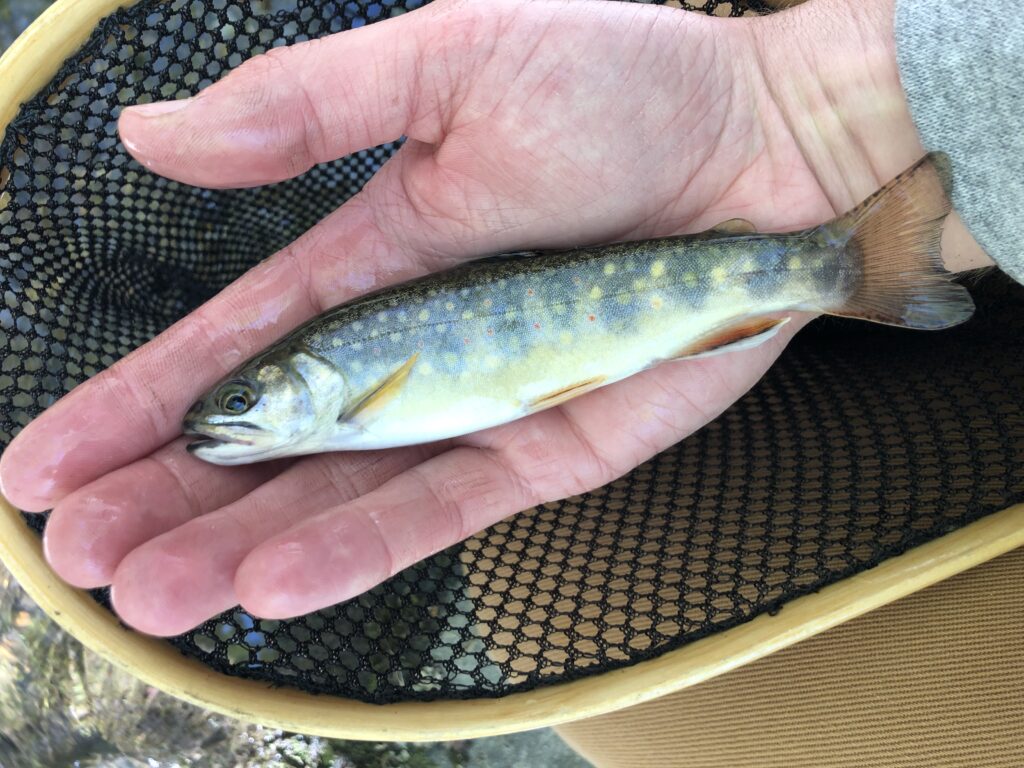

So- what did I learn? It turns out that there’s a surprisingly high number of streams in the Garden State capable of sustaining naturally reproducing trout, regardless of species. I was even able to find a few creeks that had not been previously surveyed or mentioned by researchers that had healthy populations. The presence of any wild trout in these streams is an indicator of decent water quality, which was also a pleasant surprise given the long history of industrialization and urbanization in my area. And of course I found brook trout, my state’s native salmonid, alive and well close to home. It may not have been the crystal clear Green Mountain streams or the mighty tannin stained rivers of Maine that I had come to love as brookie habitat, but it felt right to finally cross paths with these fish near the waters I was from and had learned to fly fish on.
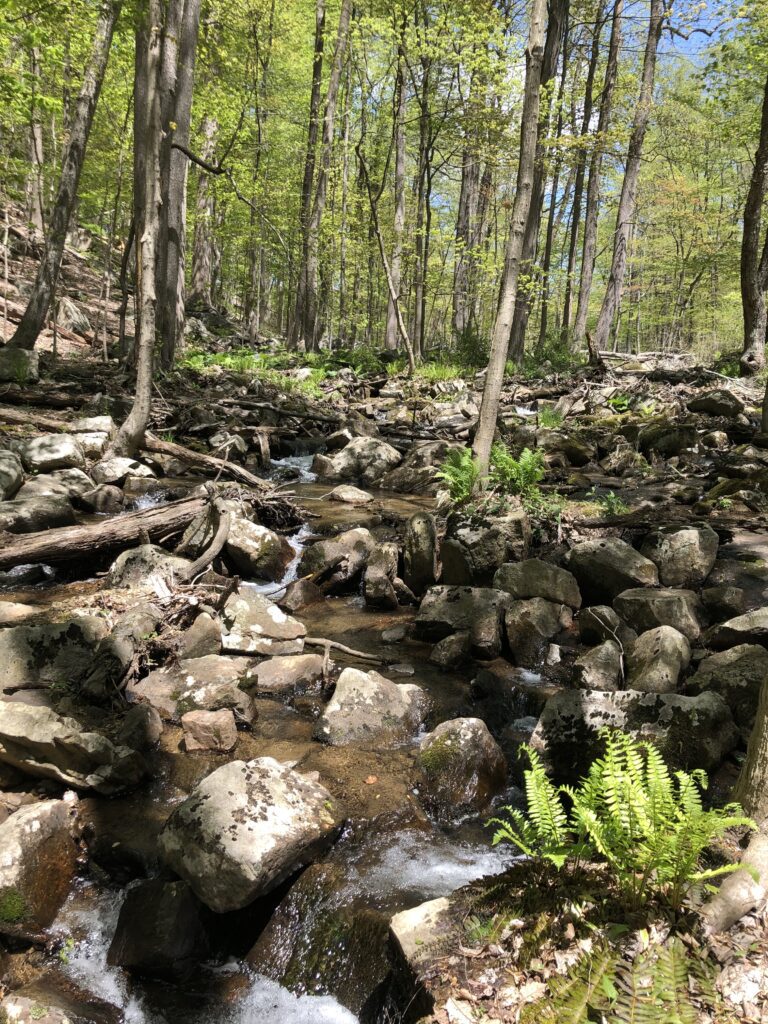

I’ve found that with most things fly fishing, we end up getting more out of a trip than we expected. What may have started as a simple goal of catching fish may end with new friends, the beginnings of a tradition, or a much needed reconnection with our natural world. For me, the hometown brookie mission introduced me to waters in my state I had no idea existed, a couple of which have become go-to spots the last few years I’ve visited Jersey. It was also a great way to get back to my roots, exploring some familiar areas during what was such an uncertain time for our world and country.
